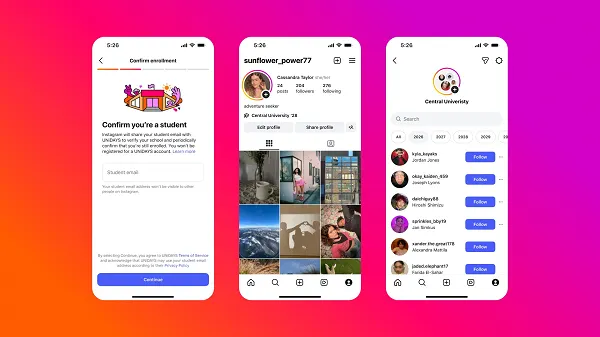SXSW 2022 Women Directors: Meet Amy Bandlien Storkel – “The Pez Outlaw”
Amy Bandlien Storkel is a documentary filmmaker best known for co-producing “The Legend of Cocaine Island” (Netflix, 2019) and the Emmy Award-winning documentary “Alabama Snake” (HBO, 2020). She has also produced and edited several short films and commercials. “The...

Amy Bandlien Storkel is a documentary filmmaker best known for co-producing “The Legend of Cocaine Island” (Netflix, 2019) and the Emmy Award-winning documentary “Alabama Snake” (HBO, 2020). She has also produced and edited several short films and commercials. “The Pez Outlaw” is her directorial debut.
“The Pez Outlaw” is screening at the 2022 SXSW Film Festival, which is taking place March 11-20. Find more information on the fest’s website. “The Pez Outlaw” is co-directed by Bryan Storkel.
W&H: Describe the film for us in your own words.
ABS: “The Pez Outlaw” is the fun and magical adventure story of Steve Glew, who spent the ‘90s smuggling Pez dispensers from Eastern Europe and selling them to the collector community in the U.S. He made millions of dollars and was living the dream, but he gained an enemy along the way: the CEO of Pez USA, The Pezident. Steve’s newfound archnemesis was determined to destroy him, yet Steve was equally determined to win.
W&H: What drew you to this story?
ABS: The short answer is joy! In the height of the COVID-19 lockdown, we were initially drawn to this story as a fun and crazy adventure, an entertaining escape from the weight of the current day for all audiences and all ages.
Once we met Steve in person, we were sold – not only on the story but on Steve himself. Steve’s excitement in telling his adventures was obvious, but on top of that we saw a sincere and caring person whose perspective and reflection has a lot to offer the world. He speaks openly and candidly about mental illness, he chokes up every time he talks about his love for his wife, and his personal growth throughout his journey is undeniable, which his spunky wife told us about very candidly.
W&H: What do you want people to think about after they watch the film?
ABS: This is one of those films that should leave you feeling happy and hopeful about life in general. It might make you believe in love or have conversations about lifelong goals or just go buy some Pez. As Steve would say, having a good story and telling it to the world makes it all worth it.
And to go very “meta,” the existence of the movie is the actual fulfillment of the main character’s goal in life – so it’s a win that the audience gets to be a part of.
W&H: What was the biggest challenge in making the film?
ABS: Locations were definitely the biggest challenge in making this film. We knew we needed to go to Austria to get two key interviews as well as some European B-roll and recreation scenes, but this was late 2020 and international travel didn’t seem like an option.
Luckily, there was a window of opportunity as the first wave had not yet hit Europe and was on a downward trend in the U.S. So, after checking with the Embassy, we flew to Vienna for one week of filming. Thankfully, we were connected to a well-known Viennese film producer, Norbert Blecha, who helped pull everything together in a very short amount of time.
But after that, all the recreations had to be shot in Michigan, and we had to get creative to fake it as Europe. There was a lot of time spent scouting to find places that would work. One key location ended up falling through the day we arrived on the ground. We had to scramble to find a new location for the Pez Factory scene, especially since it was the biggest set build of our whole film. Shout out to David Pink and Lauren Schilling who knocked it out of the park!
There were other scenes that didn’t have a locked location until the day before filming. One of those was the border crossing scene, which we ended up just filming at night behind our hotel, and it worked! No one would ever believe that we had a two-person art department.
W&H: How did you get your film funded? Share some insights into how you got the film made.
ABS: This film was produced and funded independently, outside of the studio system. We put in the first chunk of money ourselves because we believed in the story and we wanted to get the project going as quickly as possible, without pitches and meetings. Our executive producer Chris Smith got involved very early, too. After the first shoot, we showed a sizzle to him, and he was just as excited about the footage as we were, which gave us the confidence to move forward with filming.
Several close friends also put in money, along with some of our key crew members. We love the idea of involving as many of our core team as possible in the funding and ownership of the project. This way, a win for the film is a win for all of us, and when we sell it, we all get to celebrate together!
W&H: What inspired you to become a filmmaker?
ABS: Filmmaking combines my craving for creativity and storytelling with my fascination for the technical side of things.
In seventh grade I had already decided I was going to move to LA as soon as possible and work in the entertainment industry in some capacity. I was one of those kids who would connect our two VCRs together along with the stereo system and create montages from our home videos, excited that I had figured out how to do it. In high school, I had access to an amazing video production department and teacher — shout out to Mr. Radjewski — and I was blown away by all the gear and technology at my disposal. We had a brand new AVID, which had just come out, and a steadi-cam, green screen, and a video toaster — and now I’m aging myself. I couldn’t get enough of the feeling of creating something from nothing and having it “immortalized” on video — Betacam — to show anyone who would watch. Plus, we got to air our work on our local TV channel run by the high school!
I remember realizing then that I could spend the whole day, including my lunch period, and late into the night working on my projects and never get bored. And I get bored easily.
So, I kept my promise to myself and moved to LA shortly after college. I honestly never thought I would be a director. Yet after filling nearly every other role in independent filmmaking — producer, editor, music supervisor, location sound, crafty, 1st AD, props mistress, etc. — I was ready to step up and direct. When I heard about “The Pez Outlaw,” I knew it was the perfect fit for my directorial debut.
W&H: What advice do you have for other women directors?
ABS: As women in the film industry, we are often faced with statistics – how many female directors compared to male, how many female nominations, how many, how much. It can be easy to get sucked into focusing on the imbalance: to get frustrated, to complain.
But while some statistics are important, it’s even more important not to allow them to define you or what you do. Spend your time and energy creating quality content and collaborating with other hardworking and talented women. If you were able to walk through a door, hold it open for the women behind you. Then, when faced by the statistics of unequal pay or unequal opportunities for women in the industry, you can present solutions that showcase your work, and you have an army of woman standing alongside you.
W&H: Name your favorite woman-directed film and why.
ABS: “A League of Their Own,” directed by Penny Marshall. I remember watching this movie as a kid and it stuck with me. I could relate to it personally as I was only a year younger than my sister, who was naturally good at everything she did, and it felt like she always got all the attention. But more than that, the storytelling was immediately captivating, while still offering hope and humor and sadness and loss and passion and desperation and triumph and suspense – the entire range of human emotion!
And on top of all of that, it was based on a true story of real women that actually lived in this unique time, and who had these extraordinary experiences. I really loved seeing women take over and be badasses when the men least expected it, and Madonna singing “This Used to Be My Playground” still brings a happy tear to my eye.
W&H: How are you adjusting to life during the COVID-19 pandemic? Are you keeping creative, and if so, how?
ABS: Keeping creative is probably one of the main things that helped me adjust to life during the pandemic. My first few days of lockdown were spent helping to produce a filmed version of our elementary school musical that was canceled.
With one project that had just delivered at the start of the pandemic and nothing on the docket, I was free to explore stories, ideas, people, and experiences in search of our next documentary film idea. But I was also free to spend time on things that are just fun: knitting, sewing, playing with my kids, journaling, board games, and building a backyard room escape for my daughter’s birthday.
While my friends will tell you I’m a genuinely optimistic, look-on-the-bright-side person — sometimes maybe even past the point of logic — I don’t want to mislead anyone into thinking that staying creative during COVID was easy. There were times when I struggled to motivate myself, when I just missed gatherings and get-togethers and wanted things to go back to the way they were. But in a time of isolation, the opportunity to connect with others by sharing stories and working towards a common goal was the one thing I always came back to – and the thing that gave me motivation to push on.
W&H: The film industry has a long history of underrepresenting people of color onscreen and behind the scenes and reinforcing — and creating — negative stereotypes. What actions do you think need to be taken to make it more inclusive?
ABS: I know that we can all be doing more to better represent people of color both onscreen and behind the scenes.
Of course, there is never one easy answer to this question. I do know that it is often overwhelming if we look at the bigger problem as a whole, but if we focus on what one of us can do, I think we have a better chance at making a difference.
With independent filmmaking, it is always a challenge to find collaborators that work well together and share a passion for a particular story, but we all bring different experiences and perspectives to the table.
Personally, I plan to collaborate with more people of color as the opportunities arise. When opportunities are created for me, I hope to be creating opportunities for others as well.

 Lynk
Lynk 































